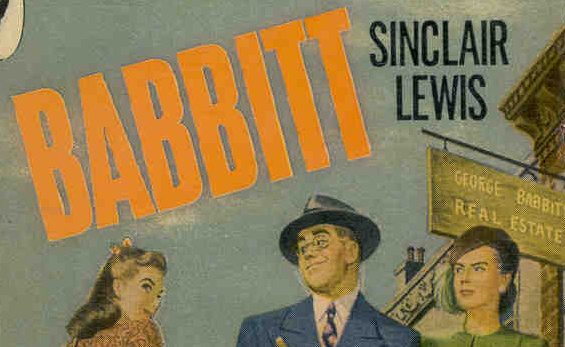From everything I’ve been reading, it feels like the 1920s is where “American” society came from. All the extremes, the attitudes, the swings of the pendulum, the craziness… (Granted, when you look at other countries and their dictatorships and cults of personality, it isn’t really that crazy. But it’s crazy for a bunch of upstart Protestants from the wilds of England… Right?)
I really feel like most of our attitudes, the way our society thinks, feels, and reacts–they’ve all honed themselves from this one significant decade. It all seems so familiar now. Not just right now, but in everything that’s happened since the 1920s.
What’s so similar about contemporary times and the 1920s?
Everything!
OK. Almost everything.
Have you read Babbitt by Sinclair Lewis? It’s brilliant and bizarre. In a good way.
Have you gone from reading anything written late in the 19th century and then went to reading Babbitt? Then it gets really bizarre, especially considering how quickly the change happened. I’m not talking just writing topics, but writing style. I realize twenty to thirty years is a long time and full of significant changes, but Babbitt reads to me like it could’ve been written in the 60s. Or the even the 90s. (Which is also the time span of twenty to thirty years… Just saying.)
Our literary history moves from 19th century American novelists like Theodore Dreiser (who scarcely got away with a “kept woman” heroine in Sister Carrie) to Edith Wharton’s upper-class drama in The Age of Innocence, to Henry James, who was just beginning to explore the concept of the unreliable narrator in What Maisie Knew and The Turn of the Screw.
Then we have Sinclair Lewis, who basically has his “hero” living in the 1920s version of The Wonder Years (just go with it and imagine Ted Babbitt as Fred Savage–it totally works), getting drunk on illegal booze and justifying it – despite claiming to be a staunch supporter of Prohibition – and considering marital affairs and voting as a liberal (the man was pure craziness!).
What gives?
I can relate more to Babbitt and his tedious daily dramas than I can to Carrie, Ellen, May or one crazy-ass governess.
Don’t get me wrong. I love the governess and her crazy ass (or is it…? Hm…) and I adore Dreiser, Wharton and especially James as writers. I can’t help it. I’m an English major. But still. I got completely caught up with Babbitt and his absurd pride in his car, his commute into town from the ‘burbs, his obsession with what other people thought of him and how and why…
And I think I got caught up with him mainly because he’s so much like the society I know.
Part of why I love Dreiser, Wharton, and James is because they’re able to show me a different world, and they write about it so beautifully and so brilliantly that I can’t help but be drawn in and completely absorbed.
But, frustratingly enough, I don’t understand it fully. Why all the drama with poor Olenska? Can’t a countess just be a countess and do as she do?
My (very) basic analysis of contemporary times and the 1920s in literature
Babbitt, on the other hand? Yeah. I get him. It seems like literature took the same drastic turn that the rest of society did in the 1920s (don’t even get me started on the awesomeness that is Dorothy Parker) and that everything just exploded all at once. And that explosion has carried through all the way to today.
Even the slang that we still use got its start in the 1920s.
Did you know they used the abbreviation BFF? It’s like flappers were texting before there were cell phones. Just try out Flaming Youth by Warner Fabian (Samuel Hopkins Adams). It’s amazing. Entire conversations from Clueless could be replaced with dialogue from Flaming Youth and no one would blink.
And good grief–all the phrases they had for either being drunk, acquiring booze (granted, a word that was in existence, but not really used until the 30s), or the desire to get drunk are all the same as the ones we use now. It’s like the entire nation never wants to forget that we went through this horrible thing called Prohibition, and we use the same turns of phrase from back then to remind ourselves to never do it again.
I won’t go in to all of the political similarities. Or the historical ones. Or the socio-economic ones. I leave those to scholars better at analysis of those topics than me. For that I would definitely recommend The Roaring Twenties: An Eyewitness History by Tom Streissguth. For me, it was sometimes a bit dull, sometimes a bit overwhelming with its detail, but completely fascinating and useful. (Did you know “muggles” used to be slang for marijuana? Puts a whole new spin on Harry Potter, doesn’t it? Again. Almost everything is similar…) Streissguth gives an incredibly detailed timeline for each year, cross-references it with quotes and images, and points out the significant incident of each year and why it had the impact it did on society.
I (mostly) get literature, so that’s where I went, and that’s where I really noticed the similarities between contemporary times and the 1920s.


Pingback: Insights Into the Twenties: Book Reviews - Jenny S. Schrader